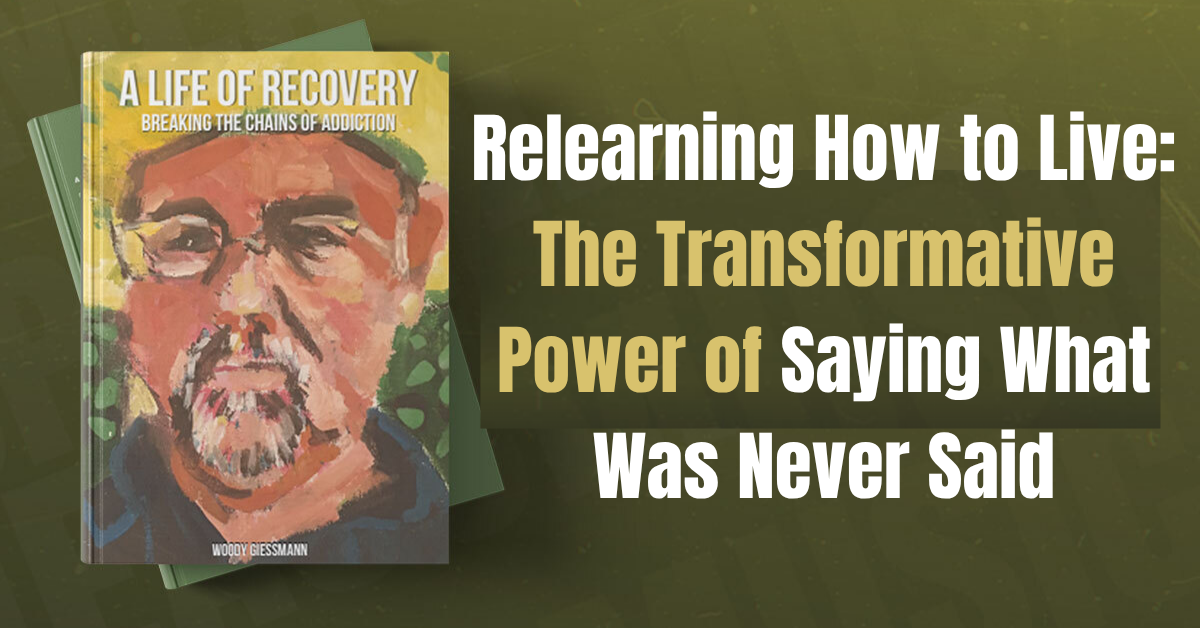Some books feel less like stories and more like second chances. Not second chances in the plot, but in what they offer to the reader—a chance to say the things that were left unsaid, to understand something about your own life through someone else’s raw and unfinished process. Woody Giessmann A Life of Recovery is one of those books.
It begins with a letter. Not a neatly folded one sent through the mail, but a kind of soul-spoken confession to his older brother Brian, who died by suicide when Giessmann was still a teenager. The letter is full of what-ifs and maybes, of guilt and gratitude, of all the words that couldn’t be spoken in a house where silence often stood in for safety. What makes it unforgettable is that Giessmann does not try to tidy any of it up. He lets the grief sit where it belongs.
That honesty sets the tone for the entire book. Giessmann doesn’t write like someone trying to teach a lesson. He writes like someone still trying to understand his own story. And because of that, the book never slips into cliché or over-explaining. It feels like listening to a friend who has lived through the worst and is finally ready to talk about it.
Much of the power in A Life of Recovery comes from what it reveals about emotional survival. Giessmann was a successful musician with The Del Fuegos, but beneath the music and movement was a child who had learned early that emotions needed to be hidden. His family didn’t have the tools for emotional openness, and like many people who struggle with addiction, he learned to cope through disconnection.
The book does not dwell on dramatic stories of substance use. Instead, it focuses on the emotional roots of addiction. Giessmann describes how trauma and unspoken pain shaped his decisions long before any drug entered the picture. That framing is a quiet but powerful reframing of how we think about recovery. It shifts the focus from fixing behaviour to understanding pain.
One of the most emotionally resonant parts of the book is Giessmann’s depiction of recovery not as a single turning point but as a long and uneven process. He describes moments of clarity followed by deep confusion, stretches of growth interrupted by medical emergencies, and the slow rebuilding of trust with the people in his life. It is not a story about achieving a goal. It is a story about learning how to live in the world with your eyes open.
Later in the book, Giessmann transitions into his professional work as an interventionist and addiction counsellor. Here, he brings the same humility and warmth to his practice that he shows in his personal story. He writes about the families he has worked with, not as case studies but as complex systems full of people trying their best with limited tools. His respect for these families is palpable.
One of the most important ideas Giessmann shares is that addiction rarely exists in isolation. It is often tangled with years of generational pain, emotional secrets, and unspoken roles within a family. He gently asks families to look at their own patterns—not to assign blame, but to open the door to a different way of relating. This part of the book feels less like instruction and more like an invitation.
The theme of voice runs throughout the story. Not just in the literal sense of speaking or singing but in the deeper sense of reclaiming the right to express truth. For Giessmann, music was one of the first places where he could be fully present. Later, after surviving a brain aneurysm that left him unable to speak, write, or move with ease, he returned to music and art as a way to recover not just his abilities but his sense of self.
That experience deepened his belief in creative expression as a tool for healing. He doesn’t position art as a solution but as a bridge—a way to feel something that might otherwise stay buried. In a culture that often privileges words and diagnoses, Giessmann’s trust in rhythm and image feels refreshingly human.
Perhaps the most moving aspect of the book is its refusal to rush. Giessmann never hurries toward redemption. He doesn’t try to convince the reader that healing is quick or complete. What he offers instead is presence. Page after page, he sits with the unresolved, the painful, the tender. He models what it looks like to make peace with the messiness of recovery.
This approach is especially meaningful at a time when so much conversation around trauma and healing is packaged for public consumption. Giessmann’s voice is not curated for social media or self-promotion. It is thoughtful, sometimes halting, always real. And in that sincerity, he creates space for others to be real, too.
A Life of Recovery is not just a book for people who have struggled with addiction. It is for anyone who has lived in a family where emotions were difficult to name. It is for those learning how to say what was never said. It is for people trying to break cycles with compassion, not contempt.
In the end, what Giessmann offers is not a story with a clean finish but a practice of continuing. Continuing to feel. Continuing to speak. Continuing to love, even when it hurts. And continuing, above all, to listen to the parts of ourselves and others that have waited a long time to be heard.

